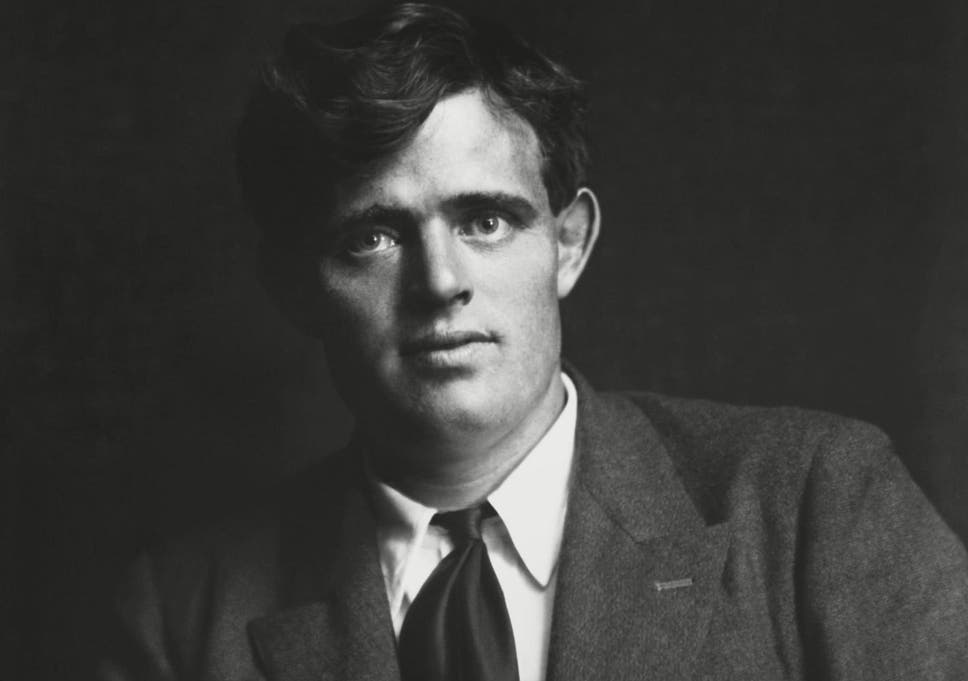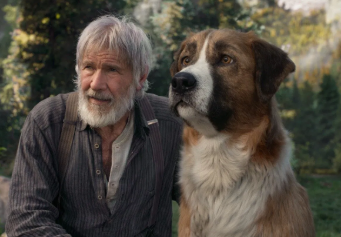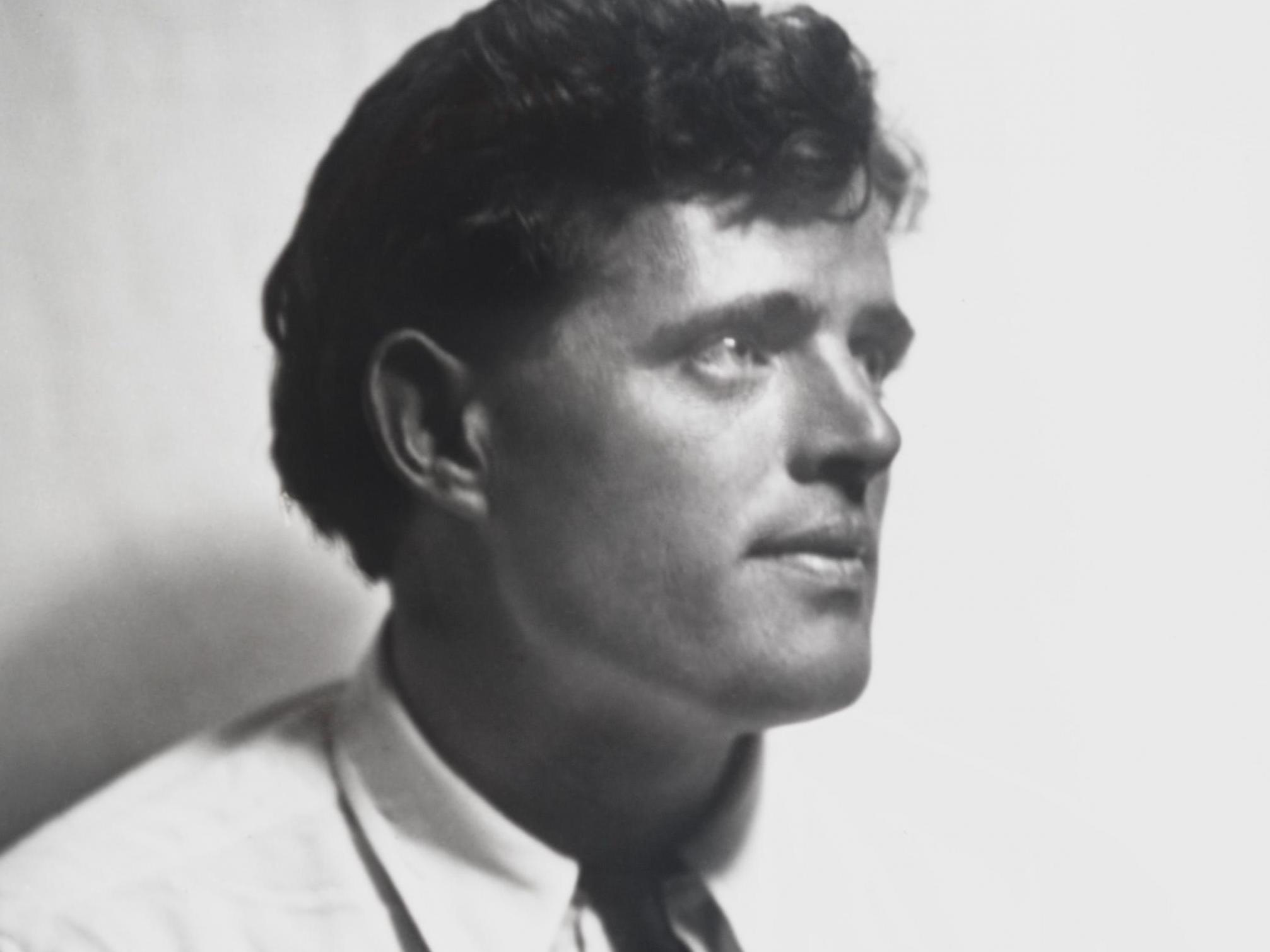
To the American public, Jack London was one of the most romantic figures of the early 20th century. To his eldest daughter Joan, though, the famous author of The Sea-Wolf, White Fang and The Call of the Wildwas a man of “relentless calculating cruelty”.
In her posthumous memoir Jack London and his Daughters, Joan, who died in 1971 at 70, was still scarred by correspondence she received from her father in February 1914. He ended his letter with a brutal message. “If I were dying I should not care to have you at my bedside,” London wrote. “A ruined colt is a ruined colt, and I do not like ruined colts.” Joan was just 13 at the time. By then, London was the highest-paid writer in America, receiving 10,000 fan letters a year, many of which were in praise of what he called his “crackerjack dog book”.
A new version of London’s bestselling novel The Call of the Wild (1903) is out in cinemas this week and stars Harrison Ford, Dan Stevens and Bradley Whitford. The hero of the tale, however, is a sled dog named Buck – a cross between a Saint Bernard and a Scotch collie – and the book is about that animal’s unbreakable spirit as he battles for survival in the desolate wilds of Alaska. There were powerful echoes of the writer’s own life in Buck’s tale. George Orwell described the handsome, rugged London as “an adventurer and a man of action, as few writers have ever been”. Orwell was not exaggerating. London’s life was a helter-skelter ride of jeopardy and misadventure. His somewhat inevitable early death came in 1916, when he was 40.
London’s dramatic rags-to-riches success story began on 12 January 1876 – five months before Custer’s Last Stand – when he was born in San Francisco. The circumstances of his birth were appropriately chaotic. His mother Flora Wellman was a medium, who was often heard whooping out the cries of her Native American spirit world contact, a chief called Plume. Flora was pregnant after an affair with an astrologist called William Chaney. He denied paternity, claiming that he was impotent. The story made the local Chronicle newspaper after Flora wounded herself with a gunshot in an apparent suicide attempt. She survived and the newborn boy was given the name John Griffith Chaney. The astrologer fled, however, and Flora turned her attentions to a disabled, impoverished Unionist Civil War veteran called John London, whom she married. In time, his step-son took the name Jack London.
By the age of 10, the future writer was already “a work beast”, grafting all hours delivering newspapers, setting up pins in a bowling alley, ironing shirts in a steam laundry and shovelling coals in a factory. By 14, he was working 18 hours a day at The Hickmott Canning Company, handing his pittance wages to his parents after a day canning peaches and asparagus. It was at this point that his natural inclination to take risks came into play.
At 15, he rented a small sailboat called The Razzle-Dazzle and began poaching oysters from the Oakland waterfront, making good money by selling his illegal haul to restaurants. The violent, hard-drinking criminals he fell in with nicknamed him “The Prince of the Oyster Pirates”. He called them “the booze fighters” and they introduced him to heavy drinking, starting a lifelong addiction to alcohol.
In July 1894, when he was a travelling hobo, the 18-year-old was arrested for vagrancy outside the city of Niagara Falls. London spent 30 days in prison, and said he witnessed “unprintable, unthinkable” things. Looking back on this period in his memoirs, London described sliding to the subterranean depths of misery. “I was in the pit, the abyss, the human cesspool, the shambles and the charnel house of our civilisation,” he wrote.
His conclusion was that he would have to make his fortune as a “brain merchant”. He’d always had a good imagination and was a voracious reader. As a teenager, he signed up everyone in his family for lending cards at the Oakland Free Library so he could take out multiple books. He was engrossed by the stories of Herman Melville, Robert Louis Stevenson, Washington Irving and Rudyard Kipling.
The experience behind bars persuaded him to leave America. After a spell on a seal-hunting schooner bound for Japan, he found the inspiration he was looking for as writer by joining the Gold Rush of 1897. He spent 11 months in the foreboding wilds of Klondike – a region of the Yukon territory in Canada, near the Alaskan border – among an odd cast of prospectors. “It was in the Klondike that I found myself,” London recalled. “There nobody talks. Everybody thinks. There you get your perspective. I got mine.”

London wanted to appeal to two types of book buyer – he called them “the superficial and the deeper reader” – with a graphic style of fiction. He figured that the Alaskan setting would be a strong draw for American book lovers, who would be gripped by tales of pioneers trying to avoid starving or freezing to death, in a place where heroism could come to the fore.
Unbowed by more than 600 rejection letters, London eventually sold his stories to magazines – including 1897’s A Klondike Christmas – and began to make good money. By 1900, he was back in San Francisco, where he wed a teacher called Bess Maddern. Within two years they had two daughters, Joan and Becky, and had moved to an idyllic house in the Piedmont Hills.
Although all seemed well, beneath the surface his marriage was fracturing. London had frequent affairs and was visiting brothels with his friend George Sterling. The two authors drank heavily and smoked hashish together. Bess would often find the pair wrestling on the parlour floor. Joan speculated in 1939 that her father’s relationship with the Bohemian writer was one of “latent homosexuality”.
Among the women London seduced was Charmian Kittredge, a writer five years his junior who had reviewed his fiction. What began as a sexual relationship turned to love, and London divorced his wife and married Charmian in 1905. Her diaries from the time suggested it was a happy partnership: she called him her “angel” and called their early days together her “lollypop days”. The marriage was certainly unusual. They called each other “mate” in public and had regular boxing sessions together. On one occasion, recounted in Earle Labor’s 2013 biography Jack London: An American Life, Charmian pummelled London against the door “so ferociously that the redwood panel was cracked”. Nevertheless, they remained together until the end, despite the agony of losing a baby daughter and suffering a miscarriage.
Charmian enjoyed being the wife of a hugely successful novelist. After The Cruise of the Dazzler and A Daughter of the Snows (both released in 1902), everything changed for London with the publication of his most celebrated book. The Call of the Wild was first serialised in the Saturday Evening Post in June 1903. The first edition hardback, which featured a distinctive illustration of a dog sled scene in three panels, sold out immediately. The cheaper paperback version, with a large illustration of Buck adorning the front, became a bestseller and one of the most famous book covers of its time. The Call of the Wild made the 27-year-old author a celebrity, with stories about his exploits filling gossip columns.
The potent tale of Buck, the pampered pet of a Californian judge who is stolen and sold to be an Alaskan sled dog, remains in print more than a century on, and has been translated into 47 languages. Chris Sanders, director of the 2020 movie adaptation, believes London’s book remains popular because it is “a gritty story of perseverance”, which speaks to the young and the old alike.
In the novel, Buck becomes the property of outdoorsman John Thornton and the dog ends up saving his master’s life. Thornton is portrayed in the new film by Harrison Ford. It was a role first played by Clark Gable in the 1935 version of The Call of the Wild, a performance still stained by controversy, because the surviving family of Loretta Young have since claimed that the 34-year-old Gable raped his 22-year-old co-star during the production. In that film, Buck was played by three leonberger dog “actors”. In the 2020 film, Buck is a CGI creation.
London was caught up in his own controversy following the publication of his bestseller. In 1907, the weekly New York magazine The Independent carried a story headlined, “Is Jack London a plagiarist?” The article suggested that London had ripped off Egerton R Young’s book My Dogs in Northland. The magazine printed passages of both books side-by-side as evidence. London laughed off the row, claiming that Young’s book was simply one of several sources for his novel. The public didn’t seem to care anyway and the success of The Call of the Wild, along with The Sea-Wolf (1904) and White Fang (1906), made London rich. In 1906, he spent $7,000 ($200,000 or £154,000 in today’s money) on a 55ft cutter-rigged ketch of his own design, naming it The Snark, after Lewis Carroll’s poem.
Buying his own boat was part of a relentless quest for adventure. In 1904, he accepted a commission from Hearst newspapers to report from the Korean Peninsula on the Russo-Japanese War. London was a fearless photojournalist. He was arrested by Japanese secret police in Chemulpo Bay for taking war photographs of Japanese forces. A week later, he was arrested again and sent to a military prison near Seoul. His third scrape proved to be his last of the war. He punched a Japanese officer he caught stealing food from a horse, and was saved from a court-martial only by the intervention of President Theodore Roosevelt.
In his final decade, London became increasingly politically engaged. Despite all his success and riches, he said he remained a pessimist because of the behaviour of “a mighty ruling class that intends to hold fast to its possessions”. In 1908, London published a dystopian novel called The Iron Heel, which chronicles the rise of an oligarchic tyranny in the United States. He would surely have been amused by Oscar-nominated actor Ford’s attack on Donald Trump during a promotional interview with Jimmy Kimmel for The Call of the Wild. In 1909, London published Martin Eden, a novel that is in part an attack on the masquerade of celebrity that helps “enslave” the public.

For all his activism, London was happiest when out riding on his ranch in the Sonoma Valley in California, the heart of wine country. “The air is wine. The grapes on a score of rolling hills are red with autumn flame. Across Sonoma Mountain wisps of sea fog are stealing,” London wrote. “The afternoon sun smoulders in the drowsy sky. I have everything to make me glad I am alive.”
London identified the four great things in life as work, sincerity, a philosophy of life and good health. Unfortunately, illness dogged him for most of his life. The scurvy he contracted in his early travels left him with lasting gum problems. He did not use a toothbrush until he was 19 and lost four front teeth before he was 21 – something that may explain why hip-hop band LA Symphony included the surprising lyric, “My name is Jack London and I got bad breath” in one of their songs.
The effects of the amoebic dysentery he caught in Mexico in his thirties, allied to his alcoholism, began to take a heavy toll late in life, when London suffered from gout, gastric disorders, rheumatism, pyorrhoea and kidney disease. He wrote about heavy drinking in his frank autobiographical novel John Barleycorn. That book came out in 1913, a year in which he underwent an appendectomy that showed his diseased kidneys were failing. In photographs from the time, London looks pale and puffy. He was barely sleeping, suffering from depression and consuming large amounts of morphine to deal with the pain. Against medical advice, he continued to eat raw fish and his bizarre daily diet consisted of two undercooked mallard ducks. Somehow, incredibly, he was still writing a thousand words a day.
London slipped into a coma and died on 22 November 1916. His death certificate lists the cause as uraemia (urine in the blood), following acute renal colic. The Call of the Wild is among the 50 books he left behind, including the posthumous novel Jerry of the Islands. London lived an extraordinary life, true to his avowal that “I would rather be a superb meteor, every atom of me in magnificent glow, than a sleepy and permanent planet”.
The Call of the Wild Is out in UK cinemas on Friday







